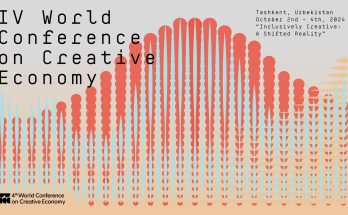A bank for women, of women and by women! This year when presenting the Union Budget, Finance Minister P. Chidambaram surprised all when he talked about setting up an all women state-owned bank. The proposed bank, he announced, would be started with an initial capital of Rs 1,000 crore (around $2 billion) and located in six urban centres by the end of this year. Indeed an ambitious and grandiose plan, triggering passionate debates and critiques.
Touted as India’s first, the proposed bank will lend mostly to women and women-run businesses, which support women self-help groups, employ predominantly women and address gender-related aspects of empowerment and financial inclusion. The Harvard-educated finance minister apparently got this bright idea when he realised that there was an entrenched bias against lending to women. Speaking after the Budget, he was quoted as saying, “A PSU bank for women will be a good institution lending mostly to women. There will be predominantly women employees, but there will be some men too who will find employment here. This will address issues of SHGs and address gender biases.” He is hopeful of obtaining the necessary approvals and banking licence by October this year.
A bank for women, of women and by women sounds like a great idea and one can only hope that it will turn into a success. But then it also raises many questions. Most importantly, why has it taken 65 years for the government to wake up to the need for an exclusive women’s bank? Why should the empowerment of women boil down to shoving them into these neat gender specific boxes? Shouldn’t empowerment be about giving them equal opportunities at a level-playing field? These and many more questions are being tossed about by critics and cynics alike. Many are arguing against the concept citing economic fundamentals. Manish Sabharwal, CEO of TeamLease, a staffing firm was recently quoted in the ‘Economic Times’ as saying, “Globally, examples show such banks have a much inferior quality than those who do not have any such restrictions.” Some others like former Chief Justice of India J.S. Verma believe that this is mere tokenism to bolster the impression that the establishment is serious about gender justice. He was quoted as saying, “Such tokenism will not deliver if it is not backed by a complete change in mindset, both in government and civil society as a whole.”
Perhaps there is some truth in all the criticism but naysayers shouldn’t rush to dismiss an idea that hasn’t even taken off. In neighbouring Pakistan, for instance, an exclusive women’s bank has been in existence for last 23 years. Started by Pakistan’s first woman prime minister Benazir Bhutto to cater to the needs of women entrepreneurs, ‘First Women Bank Ltd’ showed profit of Pakistani Rupees 25.85 crore for the year ending December 2011. It has expanded to 24 locations, 41 branches and has around 600 employees – from a mere 30 – presently. Tanzania, too, has been running Tanzania Women’s Bank from 2009.
But closer home, India has seen remarkable success stories of financial empowerment of women through Self-Employed Women’s Association (SEWA) Bank and Mann Deshi Bank. The former, started by trade unionist Ela Bhatt in Ahmedabad, reached out to the unorganised sector and today runs the country’s only profitable cooperative bank. The Mann Deshi Bank, on the other hand, is India’s first rural bank run by and for women. Founded in 1997, it is today one of the largest microfinance banks in Maharashtra with over 140,000 clients. So if these initiatives could make women more financially independent, a PSU bank with all the support of the government, may turn around lives. Of course, there are all-too-real apprehensions of it falling prey to the tycpical ills of a PSU undertaking like red tapism are there.
India has a reasonably big women workforce, both skilled and unskilled in urban and rural areas. As per statistics, in 2009-10, women were 26.1 per cent of all rural workers and 13.8 per cent of all urban workers. Further, they are estimated to be 31.2 per cent of all economically active individuals. In such a scenario, it makes sense to cater to the financial needs of this segment.
While we may argue that most women are today familiar with financial matters and mundane banking activities, there are still many who wouldn’t know their way around in a bank or have any thoughts on savings. It is this segment, which will benefit once the PSU bank takes off, provided it sticks to its agenda of empowering women. Well-known Indian banker, Meera Sanyal, country executive, RBS India believes that an exclusive bank for women would enhance women’s empowerment. “Though we do have cooperative banks and scheduled commercial banks, they have competing priorities and targets to meet. The needs of women are not their focus area. Sceptics may dismiss this idea as populist, but there is a real need for empowering our women,” she told Mint.
True empowerment of women is possible only when mindsets change and women are more financially independent. That’s the day when we may not need any more all-women banks or financial institutions. It’s time for a radical rethink to script a new chapter in women’s renaissance.
Author Profile
Latest entries
 Books / PoetrySeptember 4, 2013Sunetra Gupta: Juggling science and writing, playing music with words
Books / PoetrySeptember 4, 2013Sunetra Gupta: Juggling science and writing, playing music with words In ConversationAugust 14, 2013At home in India, leaving America and living with Hemingway
In ConversationAugust 14, 2013At home in India, leaving America and living with Hemingway CultureJuly 17, 2013London calling: Celebrating the genius of Satyajit Ray
CultureJuly 17, 2013London calling: Celebrating the genius of Satyajit Ray Books / PoetryJuly 8, 2013Hosseini’s muse sings, again: A sweeping saga of love and betrayal
Books / PoetryJuly 8, 2013Hosseini’s muse sings, again: A sweeping saga of love and betrayal







